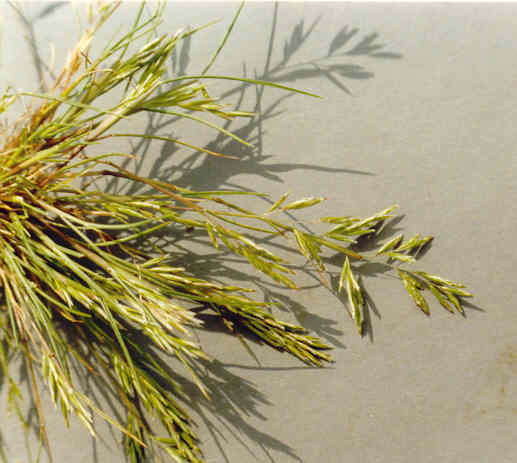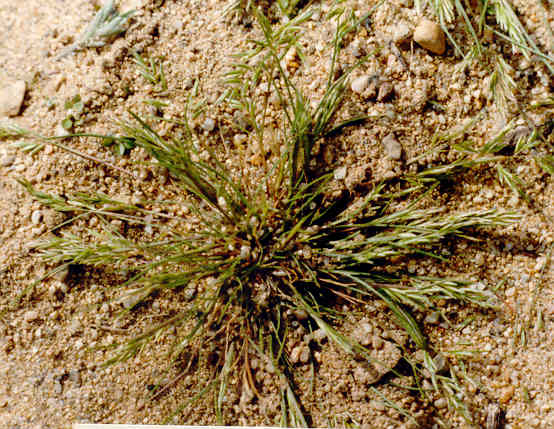
Schismus barbatus (L.) Thell.
 |
Schismus barbatus (L.) Thell.
Poaceae (Grass Family)Old WorldMediterranean Schismus |
March Photo
Plant Characteristics:
Low tufted annual; erect or prostrate, culms slender, 0.5-3 dm. long;
blades mostly less than 10 cm. long, 2 mm. wide; panicle narrow to oval, 1-5 cm.
long, mostly dense, pale or purplish; spikelets ca. 5-fld., disarticulating
above the glumes; glumes 4-5 mm. long, 5-7 nerved, shorter than spikelets,
acute; lemmas ca. 2 mm. long, 9-nerved, the margins appressed-pilose on lower
part, teeth minute, rounded and emarginate at tip; palea rounded, as long as
lemma; grain obovoid, golden, translucent, dropping from the floret.
Habitat:
Rather common in widely scattered waste places, desert and cismontane.
March-April.
Name:
Greek, schismos, splitting, because of the 2-toothed lemmas.
(Munz, Flora So. Calif. 997).
Latin, barbatus, bearded. (Jaeger
34). The species name may be due to
the split tip of the lemma being minutely barbed.
(John Johnson).
General:
Moderately common in the study area.
Photographed on the bench above and northerly of 23rd St.
(my comments).
This genus has usually been placed in the tribe Festuceae, but its
characters place it more naturally in the tribe Aveneae. (Hitchcock 280).
About 5 species of the Old World. (Munz,
Flora So. Calif. 997).
Text Ref:
Hickman, Ed. 1293; Munz, Flora So. Calif. 997; Pohl 113;
Robbins et al. 104.
Photo Ref:
March 1 87 # 3,4; May-June 91 #10.
Identity: by John Johnson.
Computer Ref: Plant Data 338.
Have plant specimen.
Last edit 4/23/03.
 |
March Photo